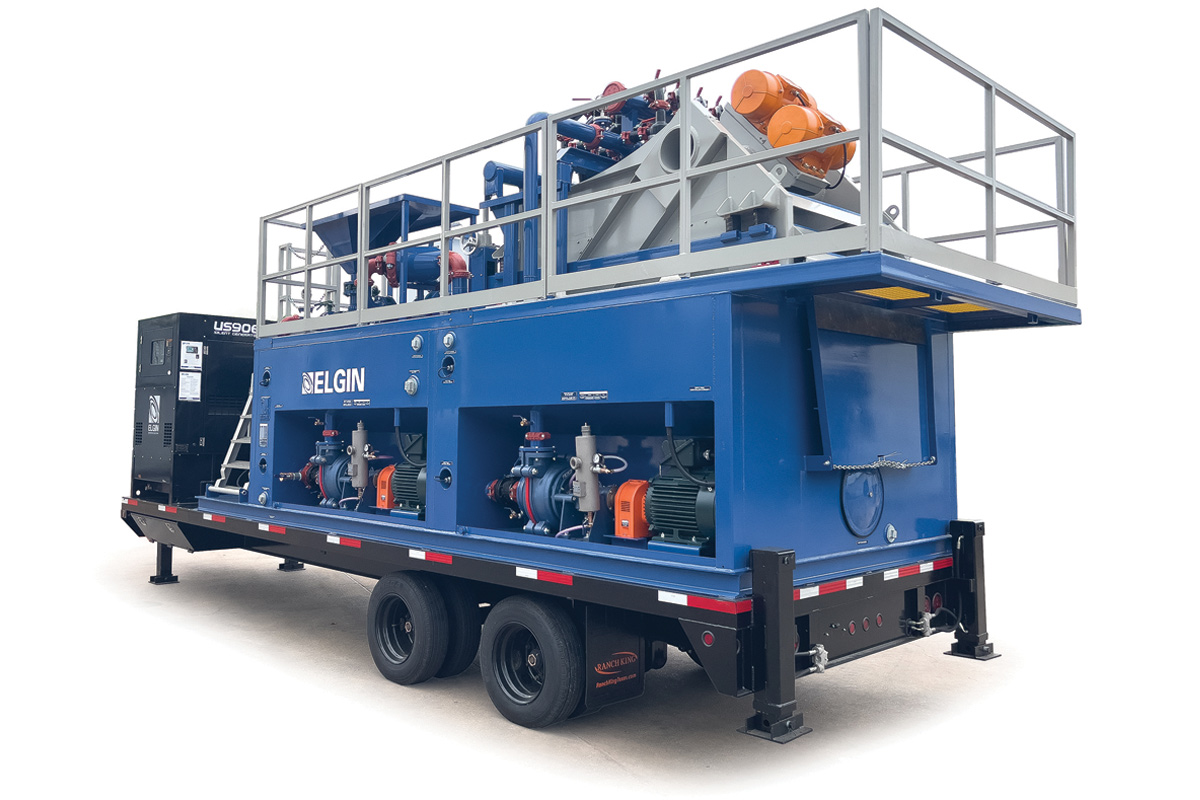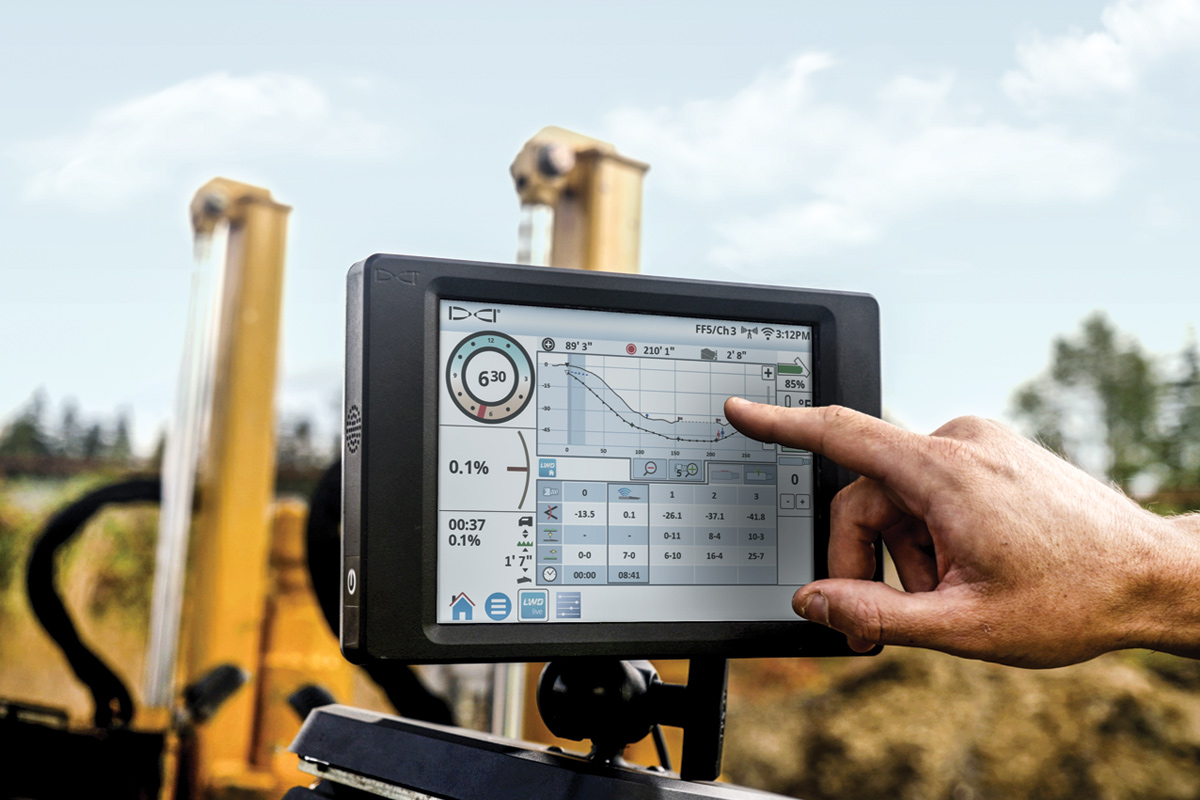
Installation Force Evaluation of a Direct Pipe Shore Approach
In the last several years, the Direct Pipe method of trenchless installation has moved from an emerging technology to a viable alternative to horizontal directional drilling (HDD) for relatively large diameter steel pipe in difficult soil conditions.
Developed by Herrenknecht, AG, more than 150 Direct Pipe installations have been completed worldwide and more than 50 have been completed in North America. Of these, eleven were completed by Laney Directional Drilling.
The Direct Pipe construction method is a one-pass, curved microtunnel installed using a modified microtunnel boring machine (MTBM). The steel installation pipe (casing pipe or product pipe) is advanced through the designed profile using a hydraulic pipe thruster assembly. The MTBM is equipped with articulated joints connected to internal hydraulic rams to provide the steering capability as the installation pipe is driven forward. This allows the pipe to be installed in both vertical and horizontal curves, similar to what is possible with HDD.
RELATED: Herrenknecht Helps Improve Efficiency with New Technology
Like microtunneling, the hole is continuously supported and during installation the pipe is in compression. Direct Pipe is launched from a near-surface launch pit, so deep shoring is not typically required.
Gulf Coast Shore Approach Direct Pipe Installation
Recently, the authors were part of the engineering and construction team that designed and completed a Direct Pipe installation from the Gulf Coast of Texas into the Gulf of Mexico. The Direct Pipe installation consisted of installing nearly 5,000 ft of 42-in. diameter steel pipe using a 48-in. diameter Direct Pipe MTBM. The relatively thick 1.25-in. wall thickness pipe was used so the pipe would rest on the sea floor as approximately 1,000 ft of pipe was thrust onto the sea floor from the reception pit for a tie-in to an existing pipeline.
While an evaluation of the installation and operating stresses was completed during the design process, a generally accepted method to estimate the thrust forces required to install the pipe had not been developed. Estimates of thrust forces were based on methods developed for microtunneling and on data obtained from a limited number of completed Direct Pipe installations.
Based on these methods, the estimated maximum thrust forces for the planned Direct Pipe installation were between 550 and 1,100 tons. As a result, the upper end of the thrust force estimate was greater than the 750 metric ton thrust capacity of the pipe thruster. The possibility that the thrust force could be higher than the capacity of a single pipe thruster required that the construction team mobilize a second pipe thruster and place it in series with the primary pipe thruster.
The subsurface conditions anticipated for the Direct Pipe installation consisted of medium dense to very dense sand and silty sand and very soft to very stiff lean and fat clay. The soft soil cutter head selected for the Direct Pipe MTBM was appropriate for these conditions.
Installation Results
Installation of the 42-in. diameter pipe began in late 2017 and was completed in early 2018. The Direct Pipe installation was completed in about 20 days without any significant difficulties. The actual measured length of the installation from launch point to reception point was 4,950 ft.
The maximum thrust force measured during installation was 160 tons. This was considerably less than even the low end of the initial thrust force estimate of 550 tons. The thrust force was only 20 percent of the thrust capacity of a single pipe thruster and the second pipe thruster was not required.
The installation thrust forces observed led the authors to question why the actual thrust force was so low and how to more accurately estimate them.

Methods for Estimating Thrust Force
Currently, most engineers design for maximum pipe stresses induced by the pipe thruster machine and do not estimate the anticipated thrust forces. Of the more than 150 Direct Pipe installations completed to date, little information is publicly available about the thrust forces measured during installation.
In 2013, Herrenknecht published an overview of 32 completed Direct Pipe installations and presented general installation data for the completed installations (Pfeff 2013). The data available from those installations were limited and only 28 installations included length, diameter, maximum thrust force and maximum friction force. Using the Herrenknecht data, correlations between thrust force and surface area were published in 2014 (Robison and Hotz, 2014), however, the correlations were not strong.
In an effort to augment the data set, the authors published a summary of installation forces for the eleven Direct Pipe installations completed by Laney (Sparks and Hotz, 2019). The authors found that measured thrust forces do not correlate well with previous thrust force estimates based on length or surface area. The research indicated that the thrust force has a much stronger correlation with the total buoyant weight of the thrust pipe.
In 2018, Rabiei published a relatively complex procedure to estimate the thrust forces for Direct Pipe installations (Rabiei et al, 2018). Using the Laney data for comparison, the procedure appears to reasonably estimate the thrust force; however, the procedure has not been thoroughly validated with additional case study data.

Thrust Force Correlations with Measured Data
What the authors didn’t know in 2017 was that the measured thrust force has a strong correlation to the total buoyant weight of the pipe and a weak correlation to the length and surface area that was used in the initial estimates of thrust force for the Direct Pipe installation. Because 1.25-in. wall thickness pipe was used so the pipe would rest on the sea floor after it was thrust from the reception pit, the pipe was much less buoyant than it would have been for pipe normally used in trenchless installations. Using the thicker pipe reduced the total buoyant weight of the pipe in the lubricating fluid to approximately 200 tons from about 750 tons if 0.750-in. wall thickness pipe had been used. This reduction in buoyant weight of the pipe allowed the pipe to nearly float in the lubricating fluid and reduce the maximum thrust force measured during installation.
RELATED: Successful Premiere for Direct Pipe in the United States
Conclusions of Data Evaluation
A hindsight evaluation of the thrust data indicates the low thrust loads for the Direct Pipe installation were likely because the heavy walled pipe caused a reduction in the buoyant weight and uplift force of the pipe. With an understanding that total buoyant weight has a significant influence on the total thrust load that can be expected for a Direct Pipe installation, engineers can more closely estimate the anticipated thrust forces for future Direct Pipe installations. While there is a strong correlation between installation forces and total buoyant weight, more data from completed Direct Pipe installations are needed to provide a reliable relationship and perhaps an empirical relationship between thrust force and total buoyant weight of the pipe.
Andrew E. Sparks, P.E., is director of engineering at Integrated Trenchless Engineering and Robert D. Hotz II, P.E., is vice president-commercial at Laney Group Inc.
References
Pfeff, D., (2013) Overview of Thrust Forces Needed on Realized Direct Pipe Projects, Herrenknecht AG.
Rabiei, M., et al (2018) Analysis and Design of Pipes Installed via Direct Pipe Technology, NASTT No-Dig Conference Proceedings, Paper WM-T4-02.
Robison, J., Hotz, R., (2014) Direct Pipe – Estimated and Actual Load Installation Analyses for 20 Crossings, NASTT No-Dig Conference Proceedings, Paper TM2-T5-04.
Sparks, A., Hotz, R., (2019) Direct Pipe – Installation Force Evaluation of Recent Direct Pipe Installations, ASCE Pipelines Conference 2019, Nashville, Tennessee.




